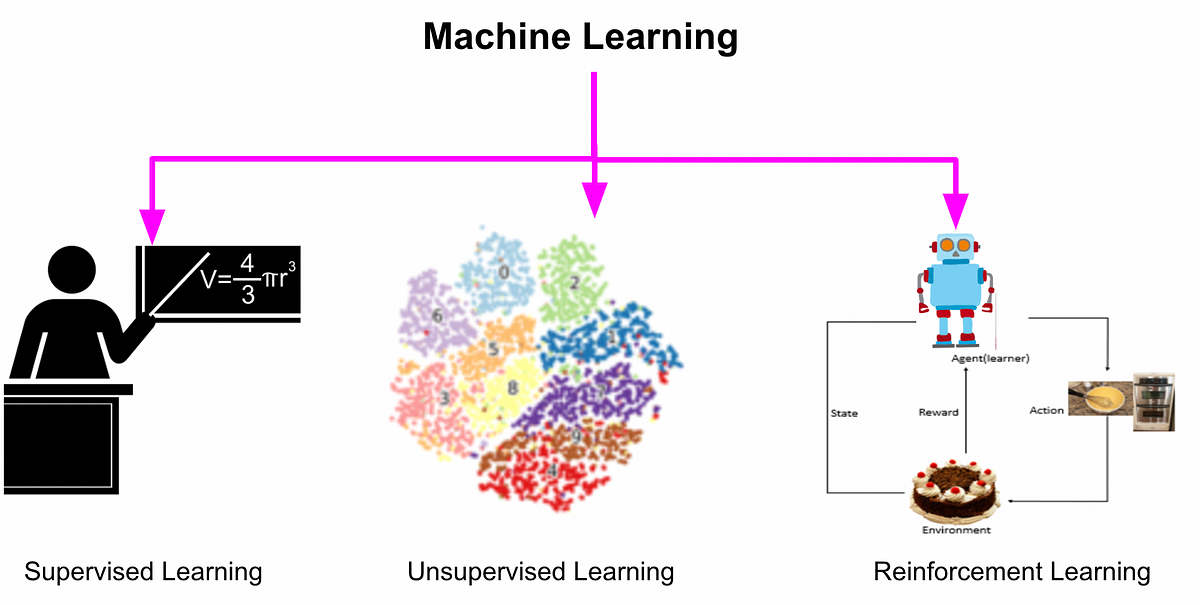
Photo by charlesdeluvio on Unsplash
Machine Learning Explained: A Full Beginner’s Guide
Understanding the Building Blocks of AI
Machine Learning (ML) is a subfield of artificial intelligence that empowers computers to learn from data and improve their performance on a specific task without being explicitly programmed. This capability has revolutionized various industries, from healthcare to finance. In this blog post, we'll delve into the fundamental concepts of ML, providing a clear and concise overview.

Types of Machine Learning

Supervised Learning:
Input: A dataset containing features (inputs) and corresponding labels (outputs).
Goal: Train a model to predict labels for new, unseen data.
Examples: Regression (predicting continuous values, e.g., house prices) and classification (predicting categorical values, e.g., spam or not spam).
Unsupervised Learning:
Input: A dataset containing features without labels.
Goal: Discover patterns, structures, or relationships within the data.
Examples: Clustering (grouping similar data points), dimensionality reduction (reducing the number of features), and anomaly detection (identifying unusual data points).
Reinforcement Learning:
Input: A state and action space.
Goal: Learn an optimal policy that maximizes a reward signal.
Examples: Game playing (e.g., AlphaGo), robotics (e.g., self-driving cars).
Key Concepts
Features: The input variables used to train a model.
Labels: The desired output variables.
Model: A mathematical function that maps inputs to outputs.
Training: The process of adjusting the model's parameters to minimize the error between its predictions and the true labels.
Testing: Evaluating the model's performance on unseen data.
Overfitting: When a model performs well on the training data but poorly on new data.
Underfitting: When a model is too simple to capture the underlying patterns in the data.
Common Algorithms
Linear Regression: Used for predicting continuous values.
Logistic Regression: Used for predicting binary outcomes.
Decision Trees: Used for both classification and regression.
Random Forests: An ensemble of decision trees, often used for improving accuracy.
Support Vector Machines (SVMs): Used for classification and regression, especially for complex boundaries.
Neural Networks: Powerful models inspired by the human brain, capable of learning complex patterns.
Clustering Algorithms: K-means, hierarchical clustering, and DBSCAN are commonly used for grouping data.
Evaluation Metrics
Accuracy: The proportion of correct predictions.
Precision: The proportion of positive predictions that are actually positive.
Recall: The proportion of actual positive instances that are correctly predicted as positive.
F1-score: The harmonic mean of precision and recall.
Mean Squared Error (MSE): Used for regression problems.
Mean Absolute Error (MAE): Used for regression problems.
Workflow
Problem Definition: Clearly define the problem you want to solve.
Data Collection: Gather relevant data.
Data Preprocessing: Clean, transform, and normalize the data.
Feature Engineering: Create new features or transform existing ones.
Model Selection: Choose appropriate algorithms based on the problem and data.
Model Training: Train the model on the training data.
Model Evaluation: Assess the model's performance using appropriate metrics.
Model Deployment: Deploy the model for real-world use.

Applications of Machine Learning
Healthcare: Diagnosis, drug discovery, personalized medicine.
Finance: Fraud detection, risk assessment, algorithmic trading.
Marketing: Customer segmentation, recommendation systems.
Manufacturing: Predictive maintenance, quality control.
Natural Language Processing: Sentiment analysis, machine translation.
Computer Vision: Image recognition, object detection.
Conclusion
Machine Learning is a rapidly growing field with immense potential. You can leverage ML to solve complex problems and drive innovation by understanding the fundamental concepts, algorithms, and applications. As you continue your learning journey, explore more advanced topics like deep learning, reinforcement learning, and natural language processing.
